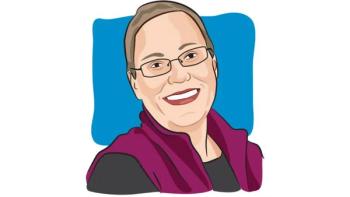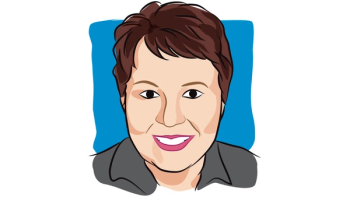
Battling High-Grade DCIS and Not Wearing Pink
Editor’s Note: This piece was submitted by a contributing writer and does not represent the views of CURE Media Group.
My life has forever changed since May 8, 2015. I couldn’t afford the $2k general anesthesia that was strongly recommended, so I got my self-pay discount, paid for the surgery and stayed awake, visualizing a white sandy beach looking at the blue sky and horizon, drinking a margarita. I had the help of local anesthesia and nurses delicately massaging my temples from under the or sheet that completely covered my face. Breathe, just breathe. I am strong. Don’t give up.
A major ductal excision was done. My surgeon removed a 2.5-inch tissue mass, including all ducts near the nipple area. The plastic surgeon reconstructed the nipple to prevent it from eventually inverting, since my breast was now hollow behind the nipple. I asked my surgeon, Dr. Manolas, chief surgeon at Mount Sinai in Queens, if I was out of the woods. The answer, “For now.”
The call a few days after the surgery confirmed duct ectasia and lobular carcinoma in-situ (LCIS). LCIS was a pre-cursor marker leading to breast cancer at some point in my life, and both breasts needed to be closely monitored. Since then, I have not been able to sleep on either side, on my back or on my stomach, without enduring some sort of pain. To this day, I cannot hug a person without fear of damaging my breast, inverting my nipple or experiencing the onset of unpredictable phantom pains arising from damaged nerves that are still healing. There is also no sensation in the nipple area. This is now “normal” to me.
The hardened and scarred tissue near the areola area has softened, but the architectural features remain. Things seemed to get better after a few months, but then my worst fears were confirmed on July 25, 2016. The radiologist walked into the room and gave me that kind of look. The first words out of her mouth were, “I’m sorry, but I don’t have good news to tell you.”
She confirmed the microcalcifications in four sites. The breast coordinator came in to schedule four stereotactic biopsies- two biopsies at a time. All four stereotactic biopsies were done within a two-week period. Titanium clippings were inserted where tissue was removed to serve as permanent landmarks and to map and track changes in the breast tissue, followed by mammograms. Approximately 40 small pieces of tissue mass were extracted from my right breast. This was extremely painful and uncomfortable. After all opinions, biopsies and imaging confirming my DCIS high nuclear grade with necrosis diagnosis, I made the hard choice to proceed with scheduling a nipple-sparing mastectomy with reconstructive surgery in October. A recent MRI confirmed that my left breast is OK for now.
My grueling experience with high-grade DCIS has taught me to ask informed questions about every little procedure and what the pros and cons are. I’ve come to understand that this is a heterogeneous disease and more research needs to be done based on the biological characteristics, not the mechanics. My disease is also multi-centric based on pathology. Having high-grade DCIS, sitting back with “watchful waiting” would be irresponsible and ignorant on my part. Not enough money has been poured into research to study this disease, for which even most doctors, surgeons and others within the medical industry, don’t have an answer. This is a lifelong battle and it is day-by-day. I’ve made the decision that I feel is right for me. I’m hoping future research will segregate each grade that falls under DCIS. I feel that people suffering from DCIS need to do their own research and determine what is best for them, what they can live with and hopefully have a well-rounded medical team that will recommend treatment tailored specifically to their diagnosis, grade, medical history and biological makeup. More awareness and attention needs to be focused on DCIS. I plan to make one last journey via a 12-hour bus ride from New York City to North Carolina heading to Duke Cancer Institute to meet with the famous Dr. Shelley Hwang, chief of Breast Surgery and researcher of DCIS, who was recently awarded a $13.4 million dollar grant to support her upcoming COMET study. She was also named one of the “100 Most Influential People” by TIME Magazine. Seeing her in TIME prompted me to contact her office. I’m hoping she can shed some light on my disease.
I am petrified of what is to come and every day is a mind battle. I have good days and bad days. My favorite movie, Shawshank Redemption, has a famous quote, “Get busy living or get busy dying.” I strive every day to “Get busy living,” eating my rocky road, watching spooky movies and being “normal.” I don’t know what lies ahead, but I’m looking forward to that light at the end of the tunnel.





